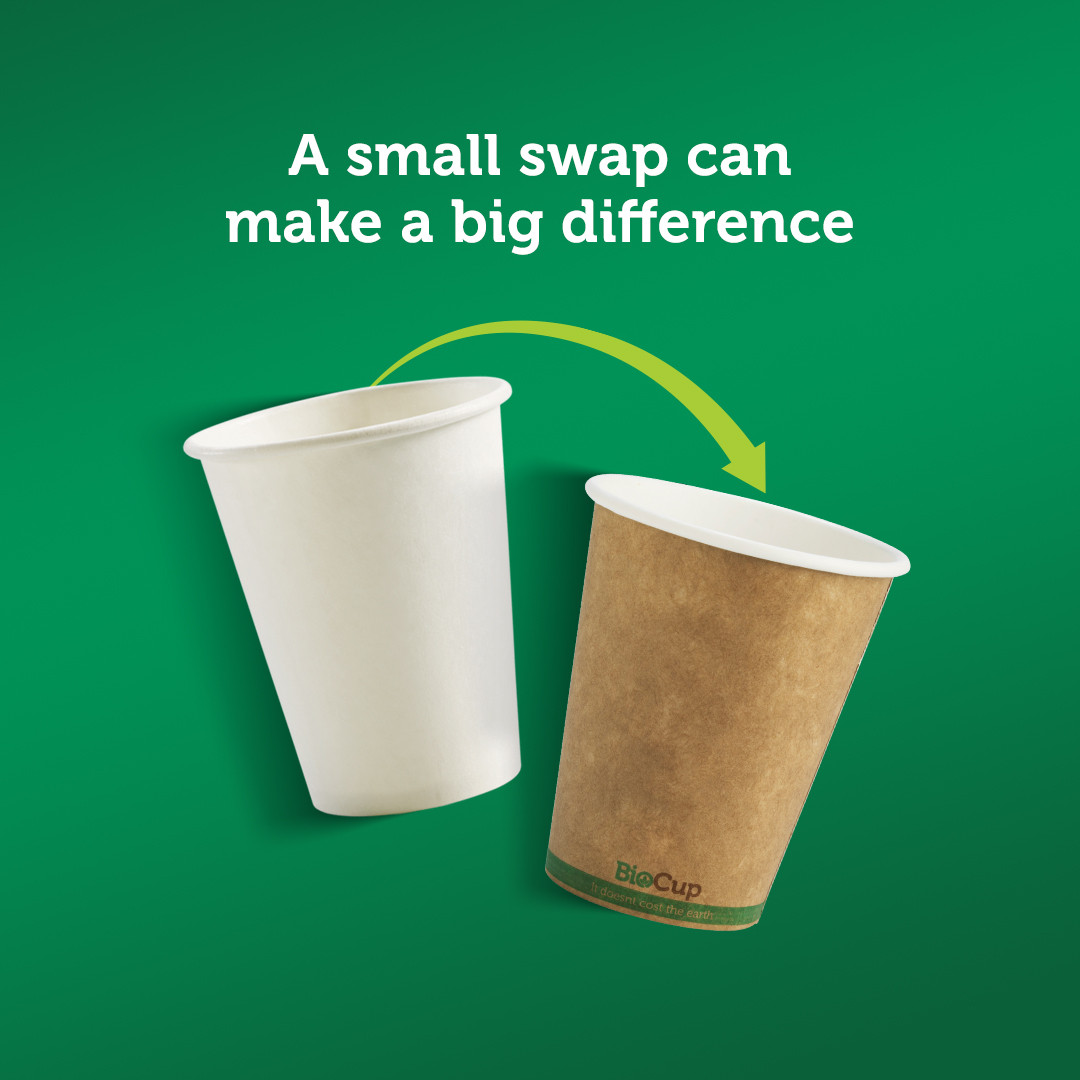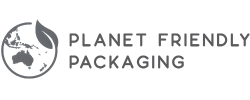
Paper Cup Recycling - The Tip of the Iceberg
5th Mar 2020
The disposable coffee cup has become the symbol – the 'poster child', if you will – of the piles of waste our society produces. And – unlike plastic straws and cutlery – single-use cups are harder to ban, simply because not everyone has their reusable cup on them 24/7. Reusable cups are certainly the most responsible option, but they are not always practical or convenient.

The Problem
Around the world, an estimated 487 billion coffee cups are thrown away each year. Globally, it is estimated that we use 487 billion disposable coffee cups a year – 250 billion are made from plastic-coated paper, and 94 billion are still made from foam polystyrene. Most of these cups are not recycled. Instead, they end up in landfill where their materials and the resources used to produce them are lost from circulation. However, there are now single-use disposable cups that are made from rapidly renewable, sustainably sourced, non-toxic, and readily recyclable materials. This allows valuable resources and nutrients to be reclaimed back into the cycle.
The Paper Cup
The coffee cup as we know it was invented for a good reason, but has turned into a huge problem. In 1907, the paper cup was invented to reduce the spread of disease caused by communal water cups. Originally a simple paper cone, it evolved into a two-piece, wax coated object in 1950. The foam polystyrene cup became the favourite in 1960 and dominated for 27 years. In 1987, Starbucks was motivated by the negative environmental impact of polystyrene and opted instead to use paper-lined cups with a plastic water-proof coating. This set the industry benchmark for single-use disposable hot cups for the next 22 years. In 2009, the first PLA bioplastic coated paper cup made its debut.
Why is PLA the Better Alternative?
BioPak lines its paper coffee cups with compostable PLA bioplastic. Currently, fewer than 5% of hot paper cups used globally are coated with PLA. PLA coated cups do cost up to 30% more than conventional cups, but with the average cost of a paper cup at around 8 cents this translates to an extra 2 cents per cup. We consider this a small price to pay given the sustainability benefits. Replacing conventional plastic with PLA has a number of environmental positives:
- PLA bioplastic is made from rapidly renewable resources, not oil
- Producing PLA bioplastic emits up to 75% less CO2 than conventional plastics
- PLA bioplastic is commercially compostable, which allows the packaging and any food residues to be diverted from landfill
- Unlike regular plastic-coated paper, the PLA bioplastic coating dissolves in the paper recycling process with no special equipment required
PLA bioplastic can be used to make other items than paper cups. Products on the market such as Tetrapak cartons – often used to package milk and juice – have multiple layers of paper and plastic and a thin layer of aluminium foil. Around Australia, councils often accept these items in comingled recycling, and yet they require the same equipment needed to recycle paper cups. This begs the question: where do they end up? Tetrapak is the world's largest producer of poly-coated packaging, producing 184 billion cartons every year. They claim that 43 billion of these are recycled – an admirable achievement, if true, but still less than 23% of annual production. In 2010/11 the Australian Bureau of Statistics recorded nearly 36,000 tonnes of aseptic (e.g. Tetrapak) packaging waste generated by industry and households for the year. In this survey, the ABS noted 18,870 tonnes of poly-coated paper waste – a small fraction of the 18 million tonnes of waste that went to landfill that year, including 8 million tonnes of organic waste, 1.8 million tonnes of plastic, 1.7 million tonnes of paper, 556,000 tonnes of metal, and 443,000 tonnes of paper.
Our Solution?
The only proven technical and commercially viable long-term solution, for all single-use foodservice products, is to produce them in a way that allows a circular economy. The circular economy is the antithesis of our current linear production model: take, make, and dispose. We need to manufacture products from sustainably sources, abundant, rapidly renewable, non-toxic materials that return nutrients back into the cycle after disposal. This is already happening. Today, many innovative plastic alternatives are used to produce high quality, functional packaging with a significantly reduced environmental impact. We hope the current media focus on coffee cups can help raise awareness of all areas of the current unsustainable, linear economic model that uses durable materials like plastic to produce packaging with a very short functional lifespan. We want to encourage consumers and business owners to challenge this model and help the world transition to a sustainable circular economy.
Information taken from BioPak's website. Read more about circular economies and the issue with biodegradable plastic on our blog.
Planet Friendly Packaging acknowledges the traditional custodians of the land on which we work.

